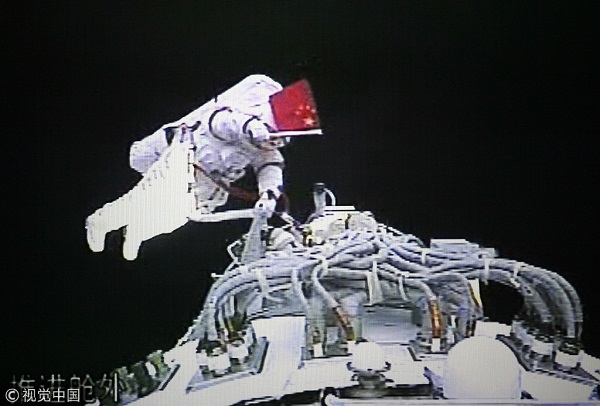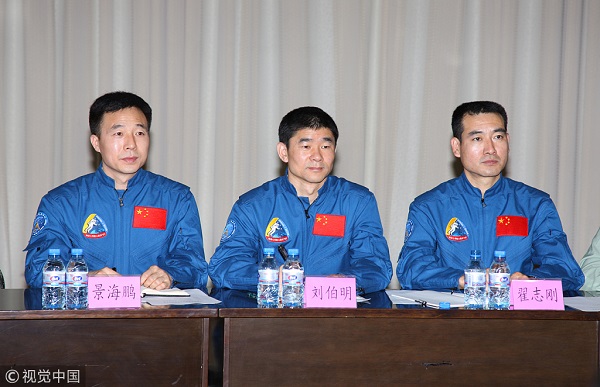This year marks the 10th anniversary of the Shenzhou-7 manned space flight mission. The Shenzhou-7 is China’s third manned spacecraft and marks a milestone in China’s aerospace history.

China's first spacewalk by Zhai Zhigang (Photos: VCG)
Shenzhou-7 was launched by the Long March 2F rocket at China’s Jiuquan Satellite Launch Center on September 25, 2008. The three astronauts on board were Zhai Zhigang, Liu Boming and Jing Haipeng.
During this mission, the astronauts carried out four major scientific experiments. The most prominent one was China’s first spacewalk by Zhai Zhigang. Two days into the mission, Zhai conducted a 22-minute spacewalk wearing a Chinese-developed Feitian space suit.

Astronauts on Shenzhou-7: Jing Haipeng, Liu Boming and Zhai Zhigang
Zhai waved the Chinese flag after he went out of the cabin of the spacecraft with the help of his teammate Liu. Zhai’s successful experiment made China the third country in the world after the United States and the Soviet Union capable of doing spacewalks.
That day the Shenzhou-7 also deployed an accompanying satellite, the Banxing, to relay images of the Shenzhou-7 spacecraft. Technical experiments involving the satellite’s release into orbit and its observations of the Shenzhou-7 from the satellite.

Shenzhou-7's photo taken by its accompanying satellite
China’s first Tracking and Data Relay Satellite Tiallian I was used for the first time with great success during Shenzhou-7’s mission. Scientists also conducted China’s first solid lubricant exposure experiment during the mission.
The Shenzhou-7 mission was China’s first three-person mission in outer space, and laid the foundation for China to build its own space station in the future.


